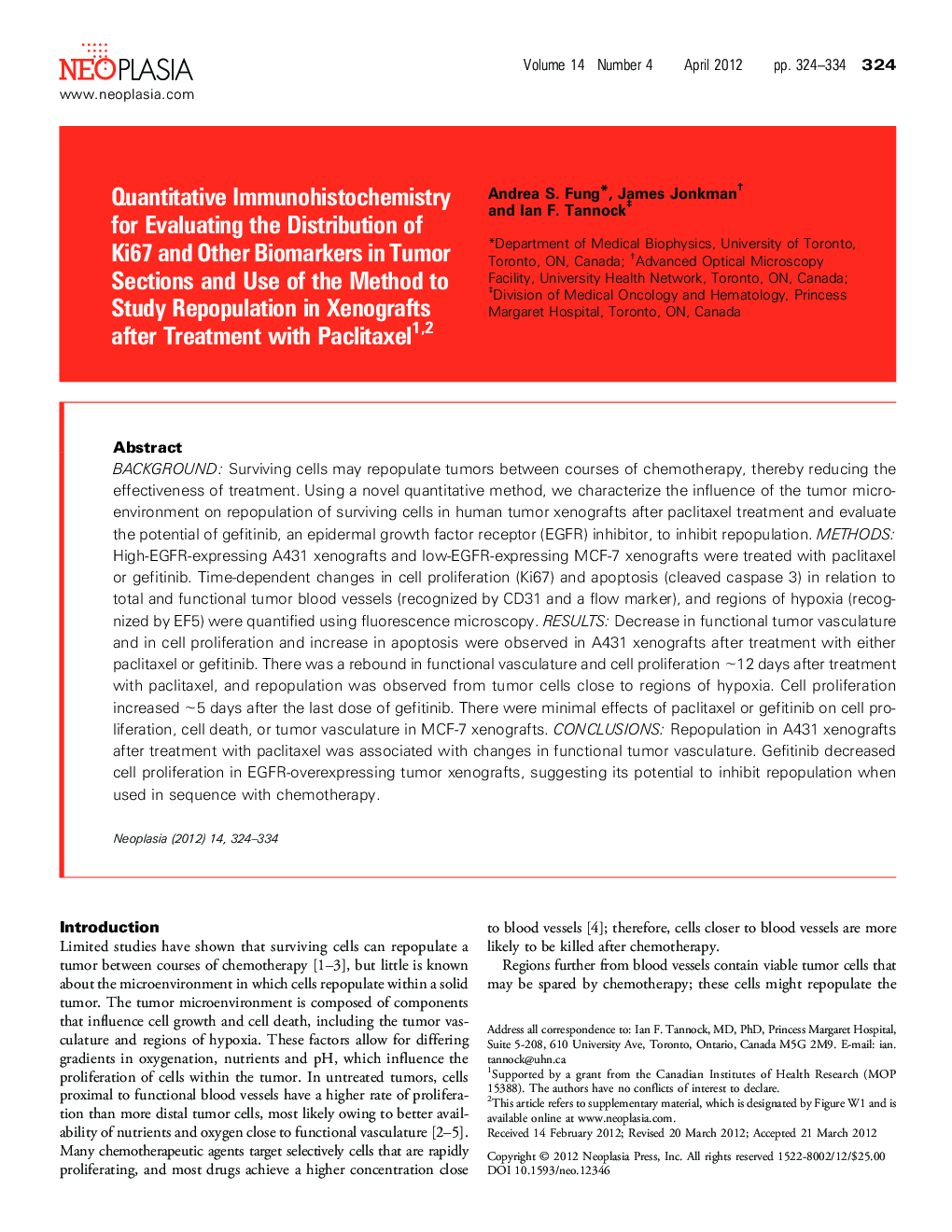| Article ID | Journal | Published Year | Pages | File Type |
|---|---|---|---|---|
| 2151507 | Neoplasia | 2012 | 12 Pages |
Abstract
Background: Surviving cells may repopulate tumors between courses of chemotherapy, thereby reducing the effectiveness of treatment. Using a novel quantitative method, we characterize the influence of the tumor microenvironment on repopulation of surviving cells in human tumor xenografts after paclitaxel treatment and evaluate the potential of gefitinib, an epidermal growth factor receptor (EGFR) inhibitor, to inhibit repopulation. Methods: High-EGFR-expressing A431 xenografts and low-EGFR-expressing MCF-7 xenografts were treated with paclitaxel or gefitinib. Time-dependent changes in cell proliferation (Ki67) and apoptosis (cleaved caspase 3) in relation to total and functional tumor blood vessels (recognized by CD31 and a flow marker), and regions of hypoxia (recognized by EF5) were quantified using fluorescence microscopy. Results: Decrease in functional tumor vasculature and in cell proliferation and increase in apoptosis were observed in A431 xenografts after treatment with either paclitaxel or gefitinib. There was a rebound in functional vasculature and cell proliferation â¼12 days after treatment with paclitaxel, and repopulation was observed from tumor cells close to regions of hypoxia. Cell proliferation increased â¼5 days after the last dose of gefitinib. There were minimal effects of paclitaxel or gefitinib on cell proliferation, cell death, or tumor vasculature in MCF-7 xenografts. Conclusions: Repopulation in A431 xenografts after treatment with paclitaxel was associated with changes in functional tumor vasculature. Gefitinib decreased cell proliferation in EGFR-overexpressing tumor xenografts, suggesting its potential to inhibit repopulation when used in sequence with chemotherapy.
Related Topics
Life Sciences
Biochemistry, Genetics and Molecular Biology
Cancer Research
Authors
Andrea S. Fung, James Jonkman, Ian F. Tannock,
